Take a Look, it's in a Book: Found Ephemera
Published on April 09, 2024

By Catherine L.
A key element that distinguishes libraries from bookstores is that the materials are shared. They circulate in the community, and at a public library, amongst truly all kinds of people. The ephemera found in books is a tiny window into the life of stranger, but one with whom you have at least one thing in common: you both checked out the same book.
I keep a collection of these left-behind items, and looking through them gives one the feeling of traveling through time and space (much as you can in a good novel): a Las Vegas hotel keycard, a coupon for an oyster bar in Key West, an admission ticket for a German castle, Icelandic krónur, a cash register receipt in what I’m pretty sure is Polish. An old, printed order blank for Meadow Gold Dairy (to get your oleo and Golden Guernsey). A yellowed newspaper clipping of Louis L’Amour’s 1988 obituary.
As poignant as I find so many of these, just as many have pure amusement value.
I present a small sampling of the little treasures staff have found in the returns bin and on our shelves over the years.
An age-old question, with definitive response:
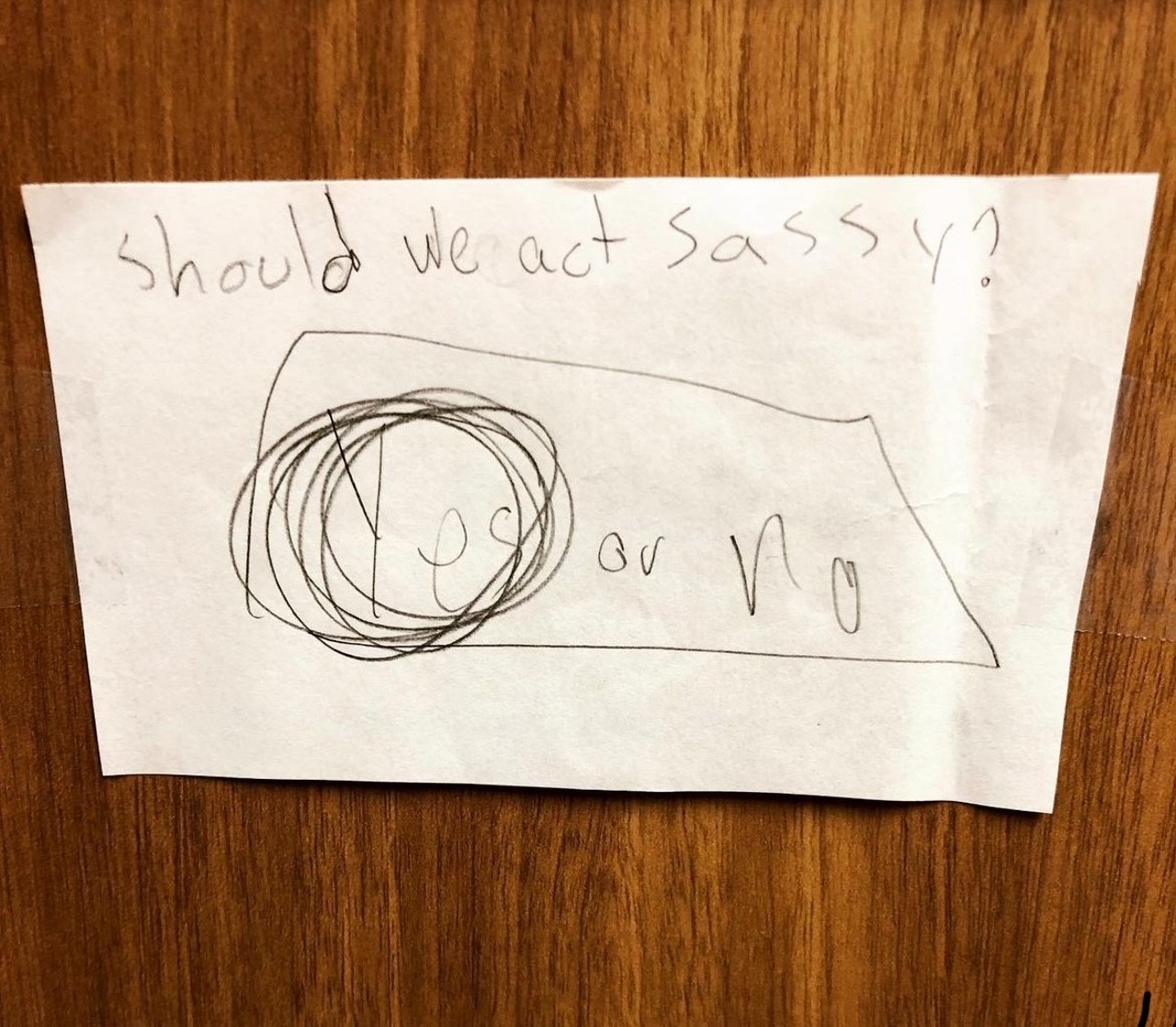
A grocery list of someone I’m sure I could be friends with:

A snack; perhaps a proffered trade for the DVD that should be here:
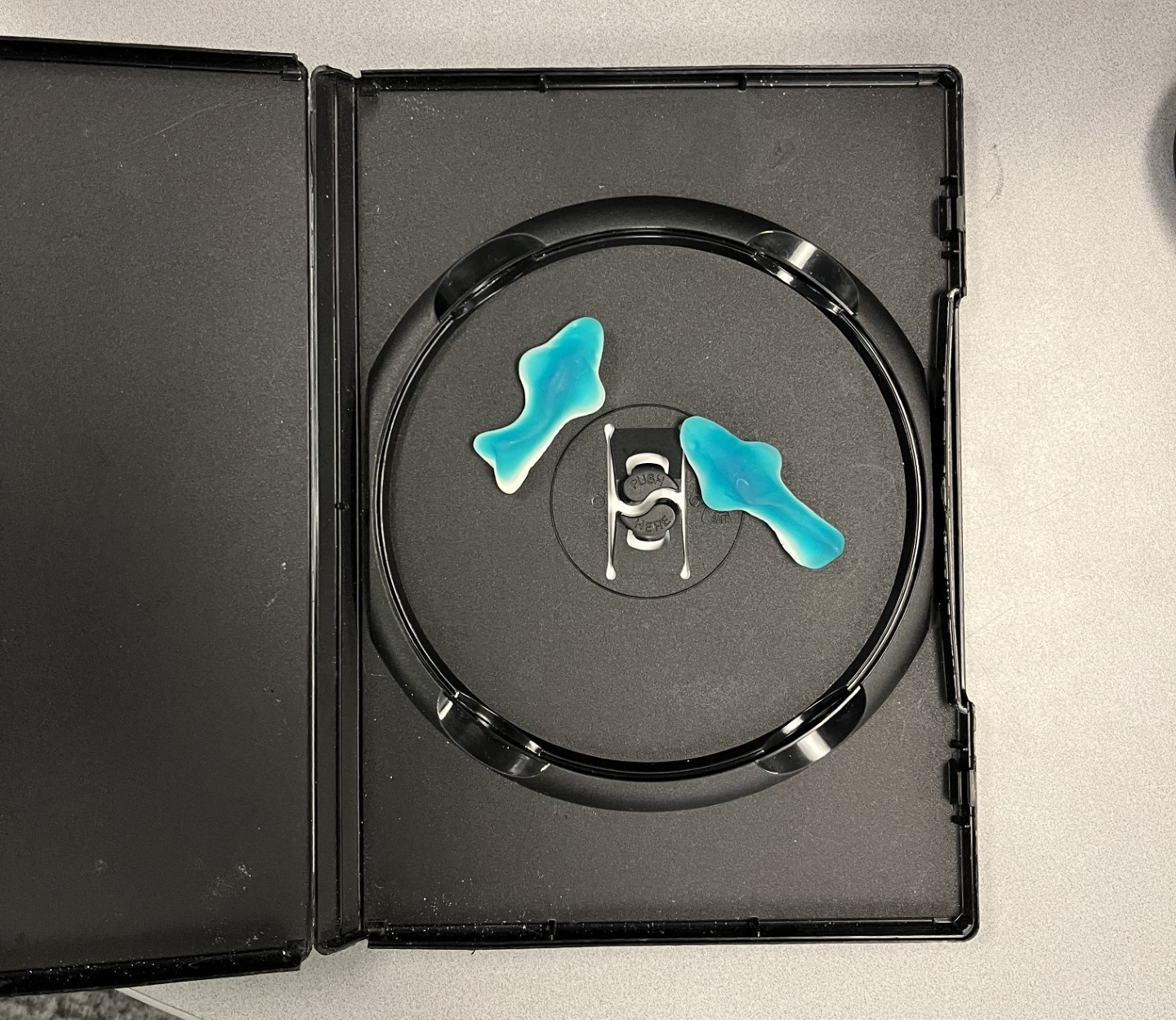
This picture of a horse?
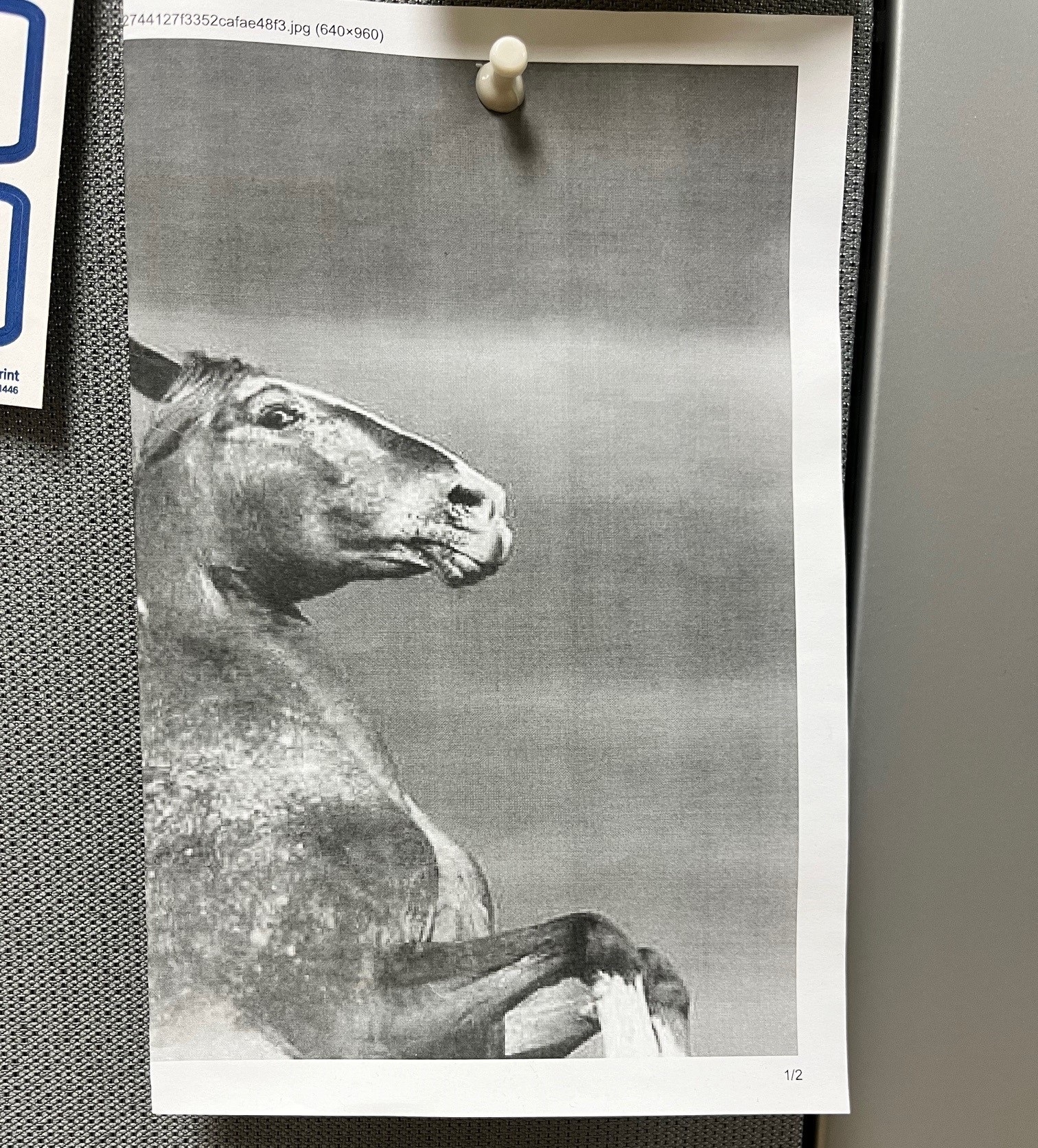
Love poems:
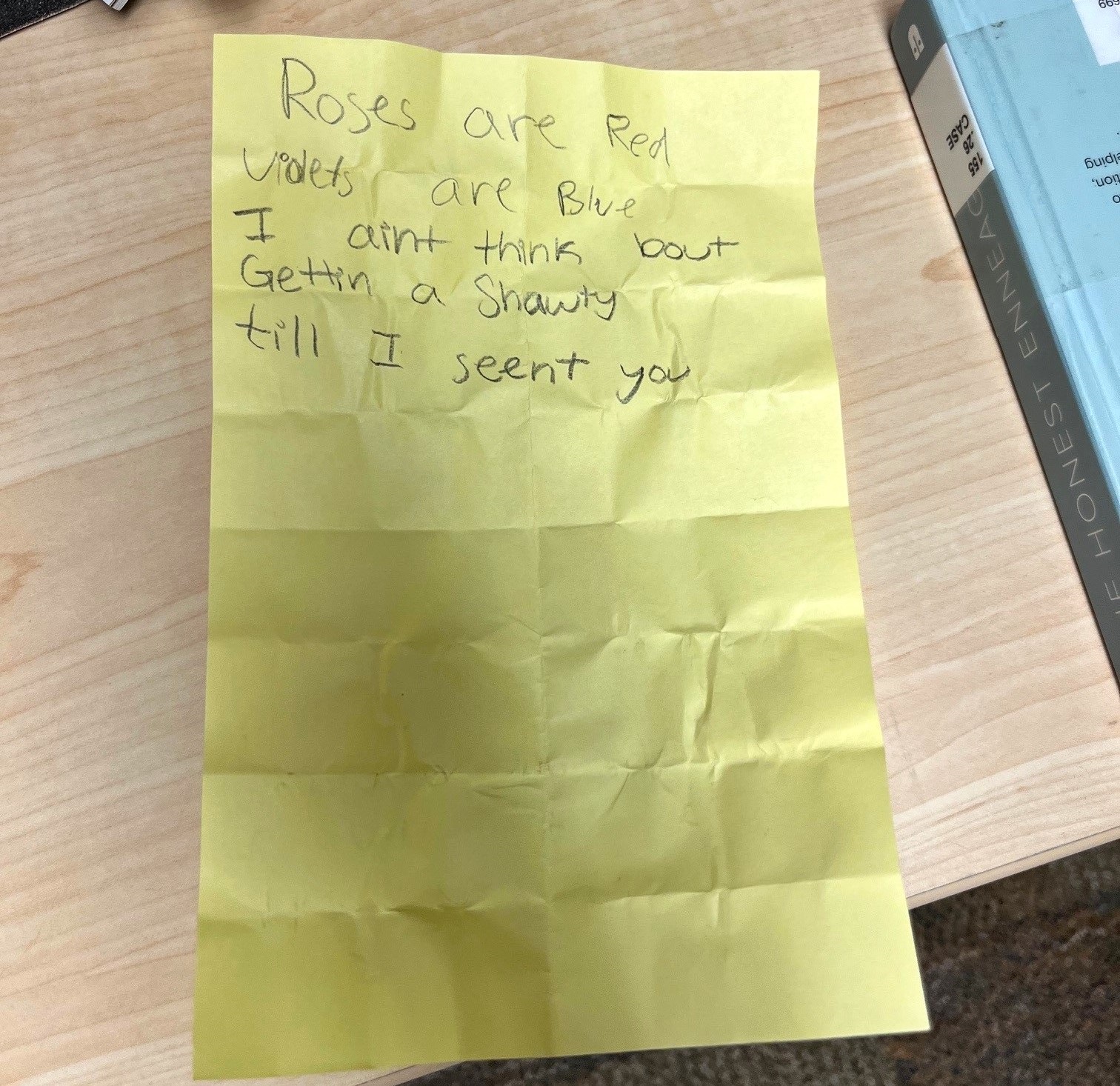
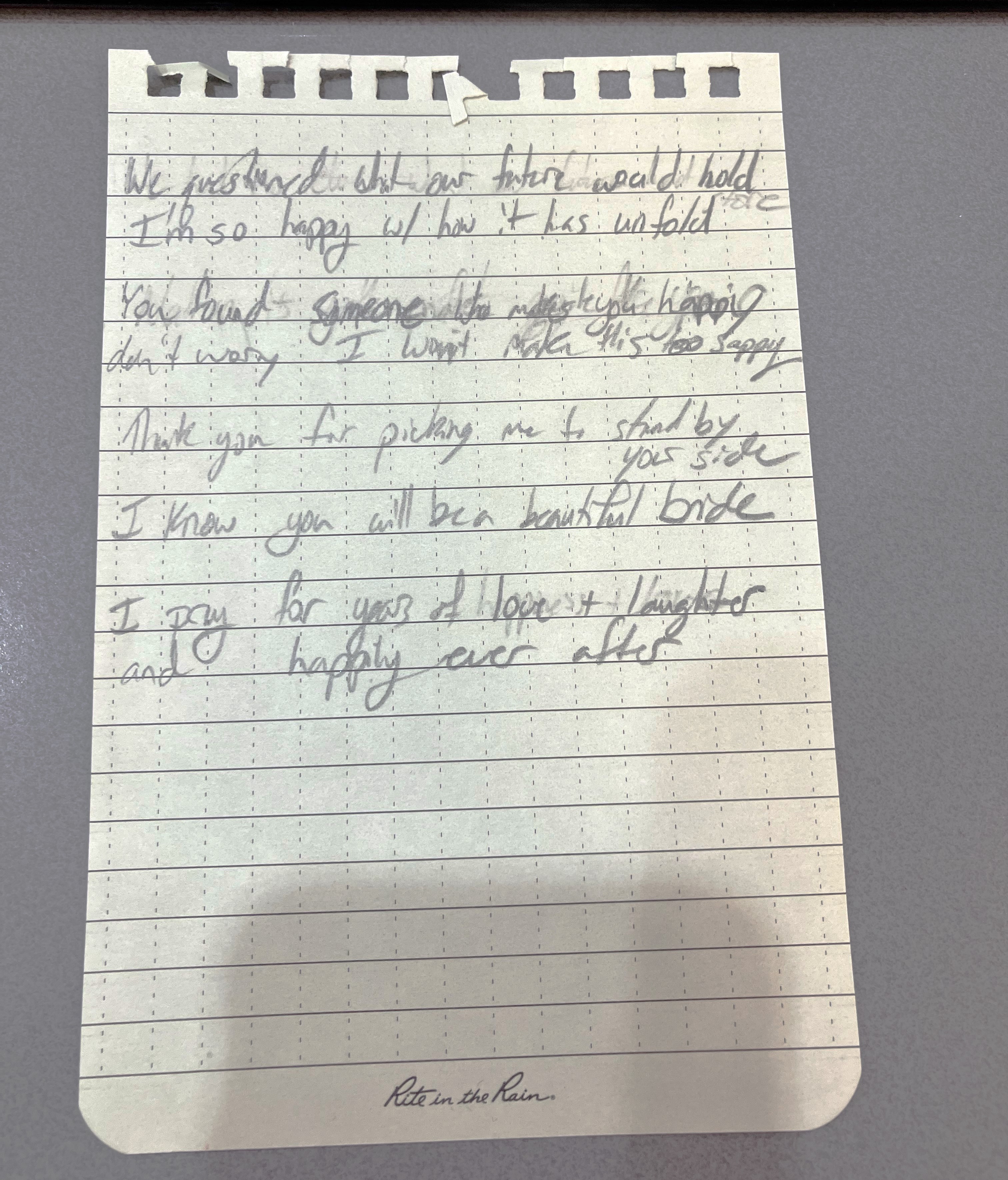
80s and 90s library cards, from when the only branches were Main, Caille, and the Bookmobiles (plural!):
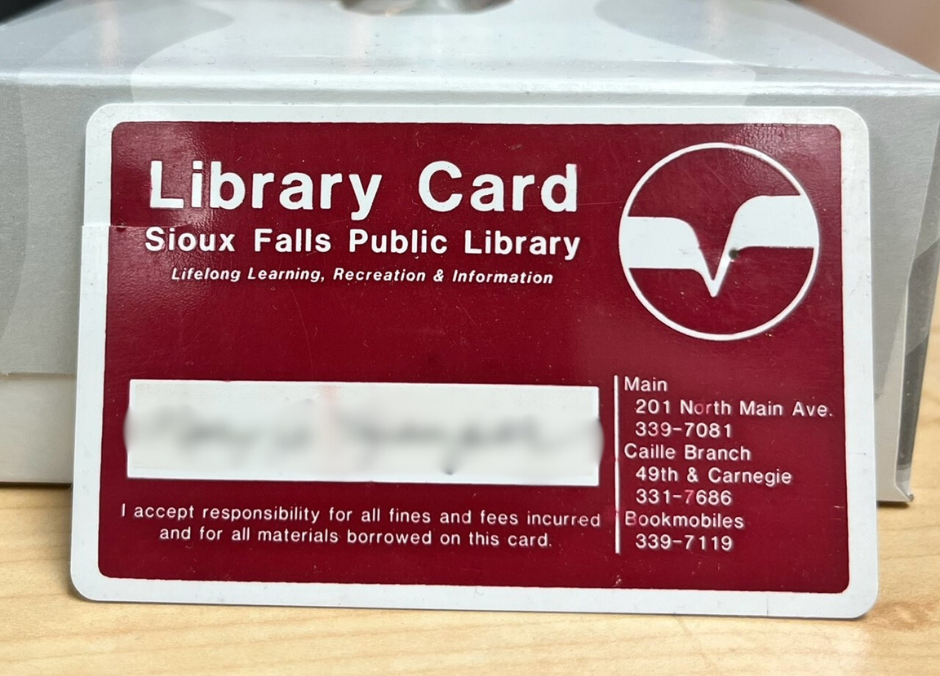
Works of art:
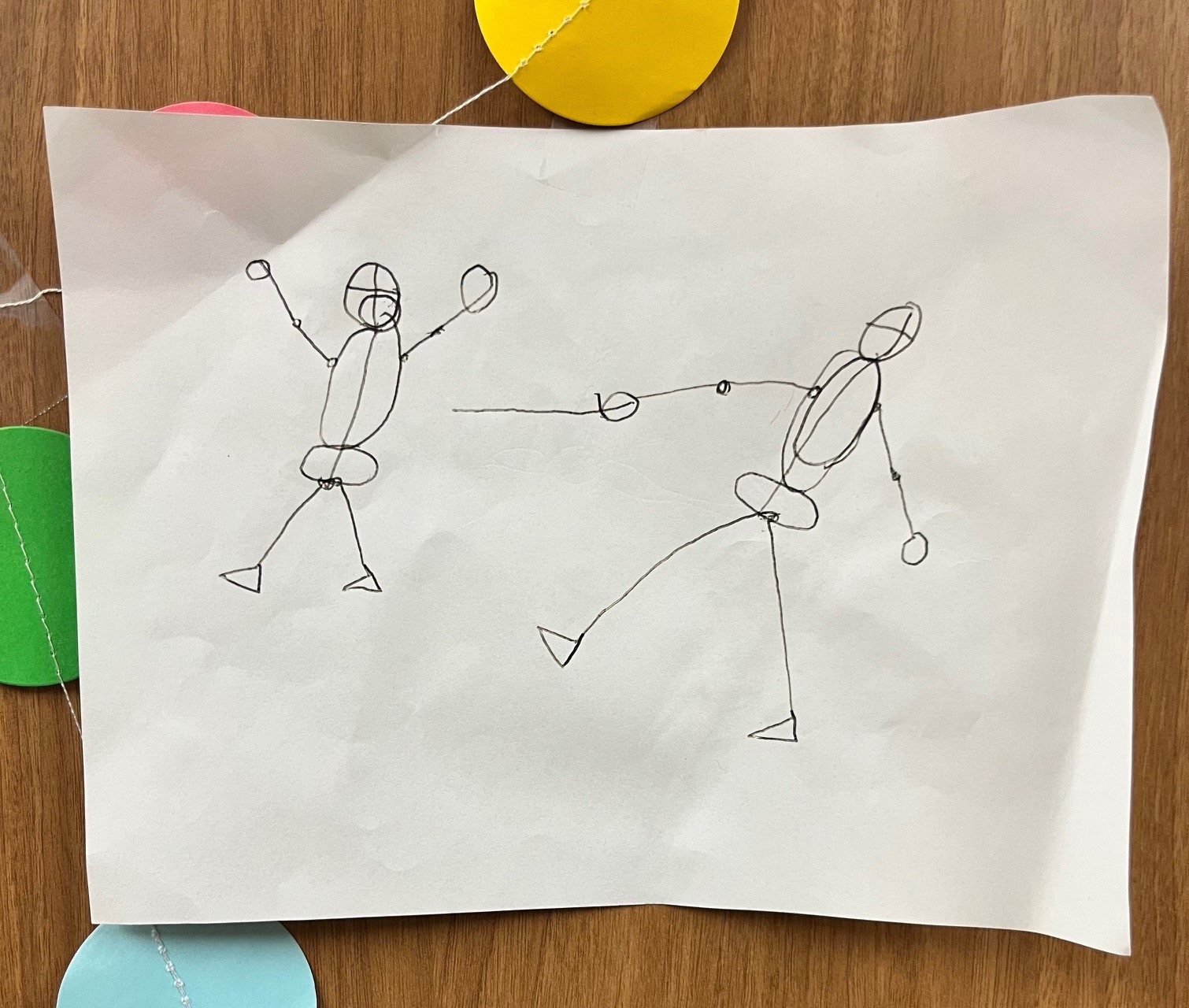
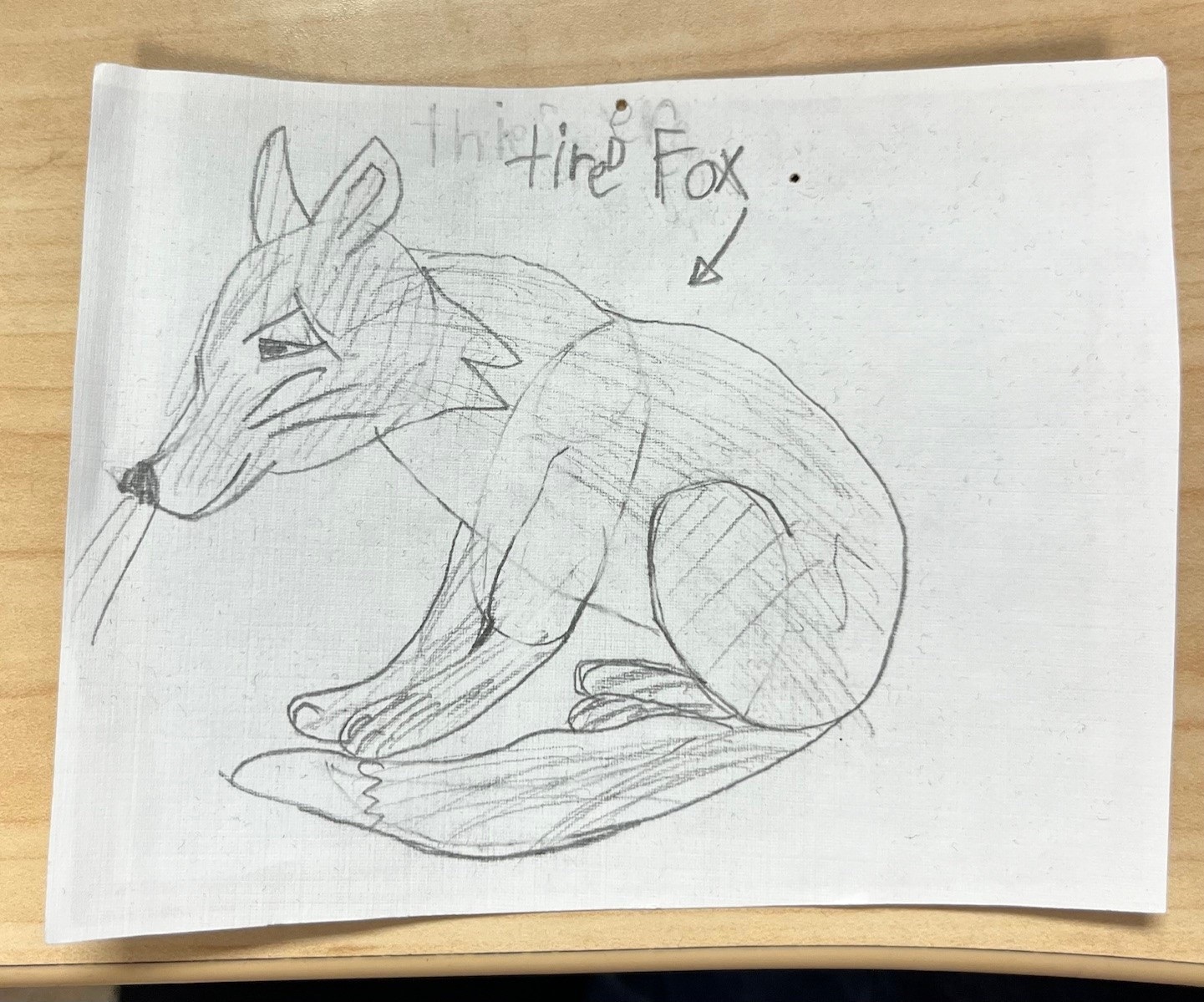
An innovative method of paying fines:
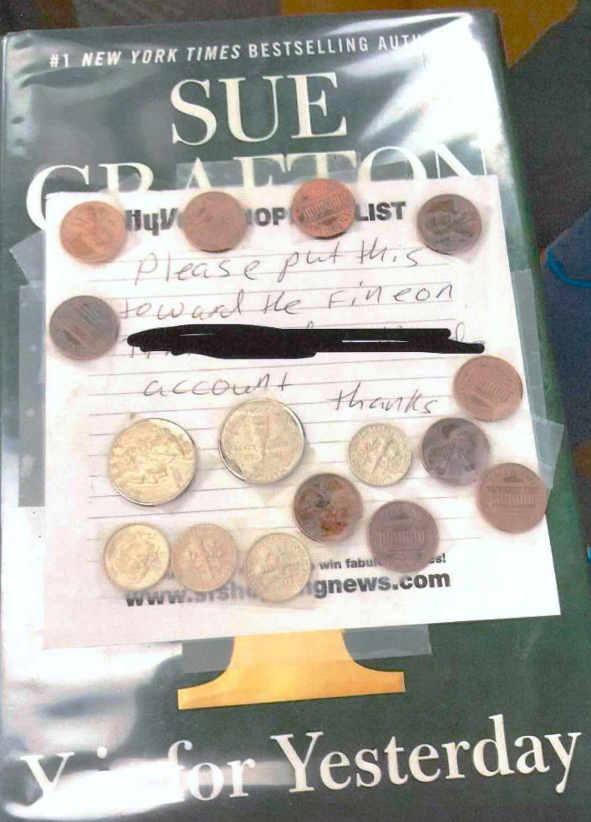
Countless photos of unknown children, families, and individuals that I’m sure have as fascinating a story as any human:
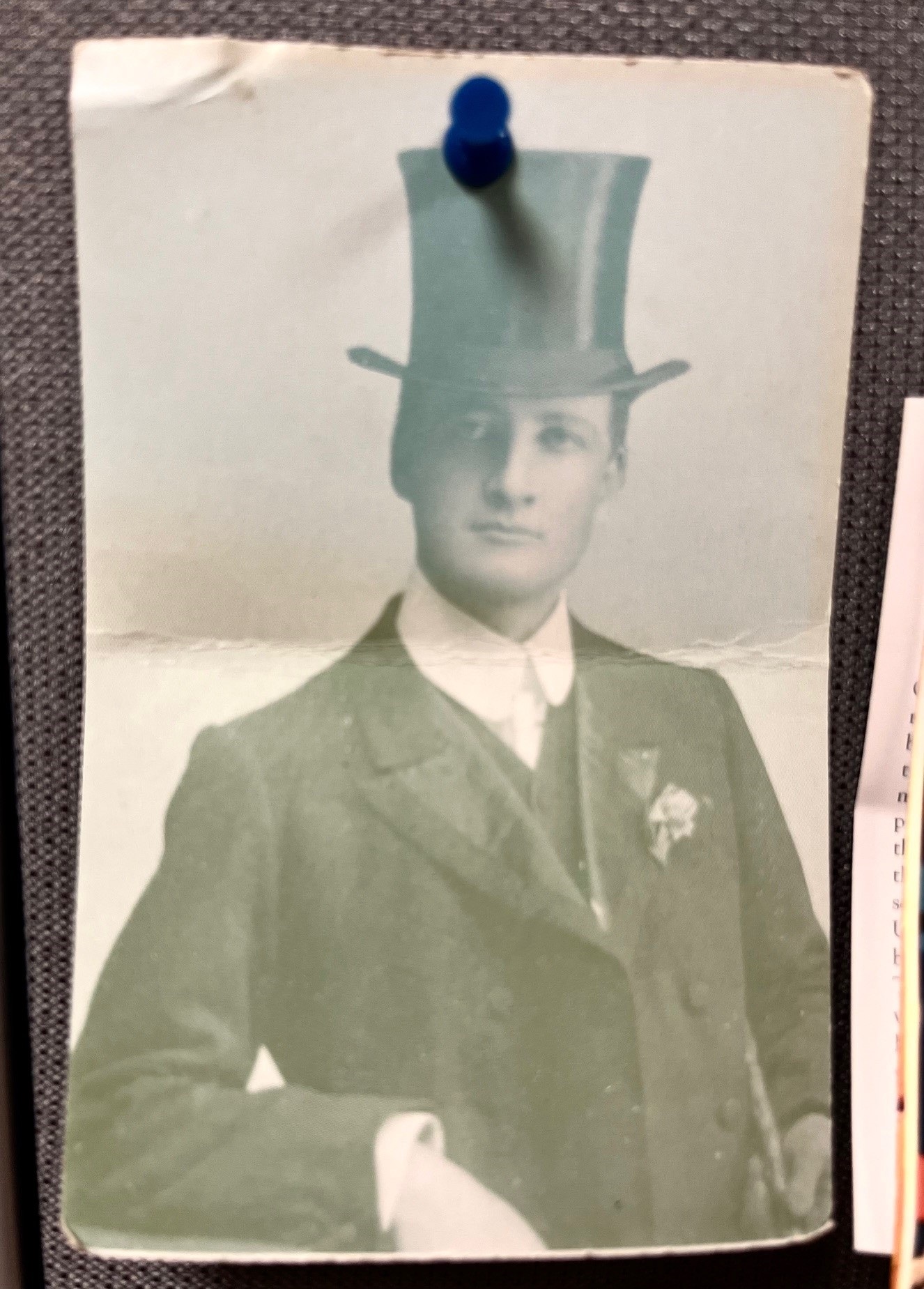
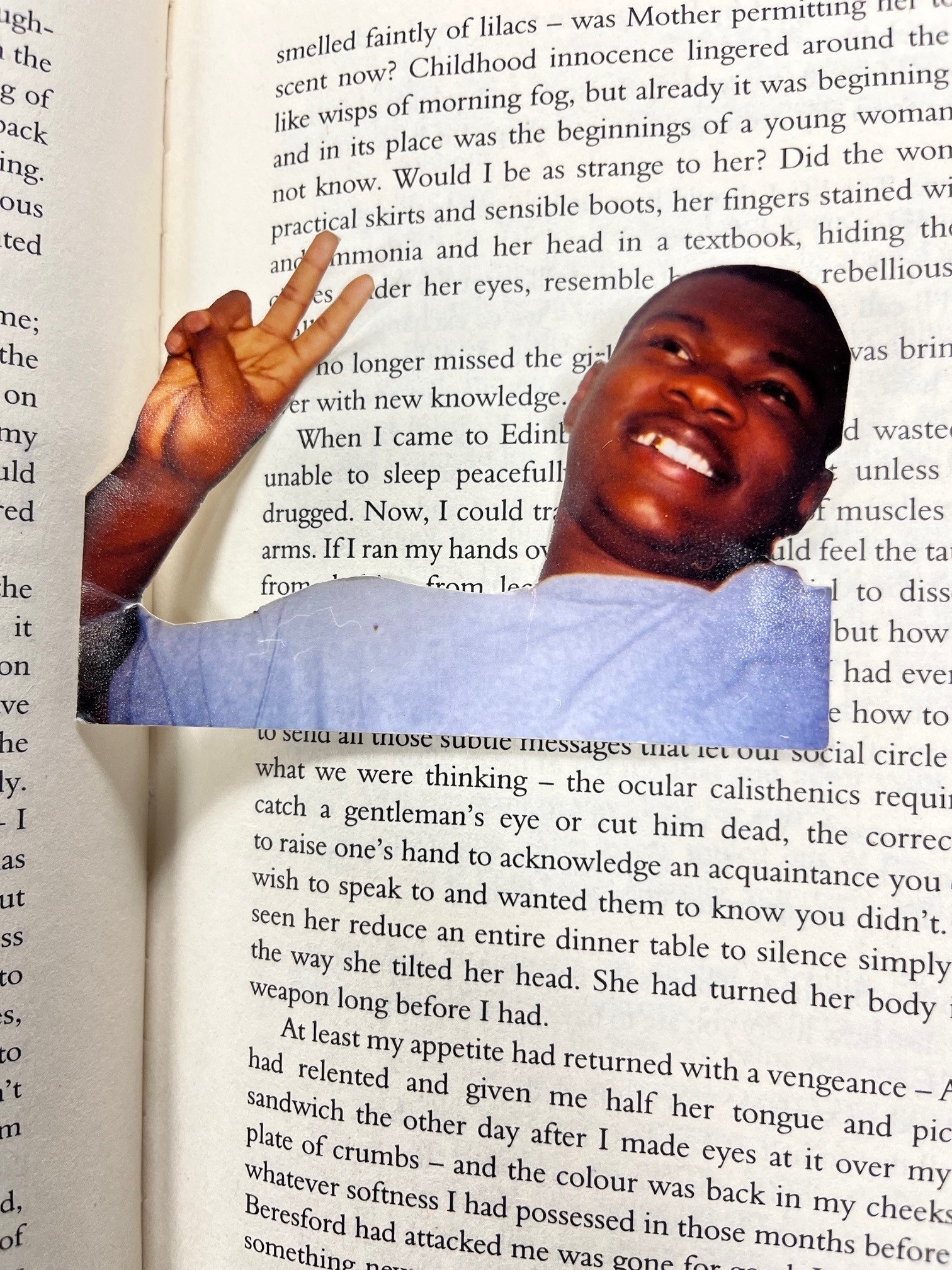
Postcards—this one’s entire message reads "Pam- Hi. Love Bonnie":
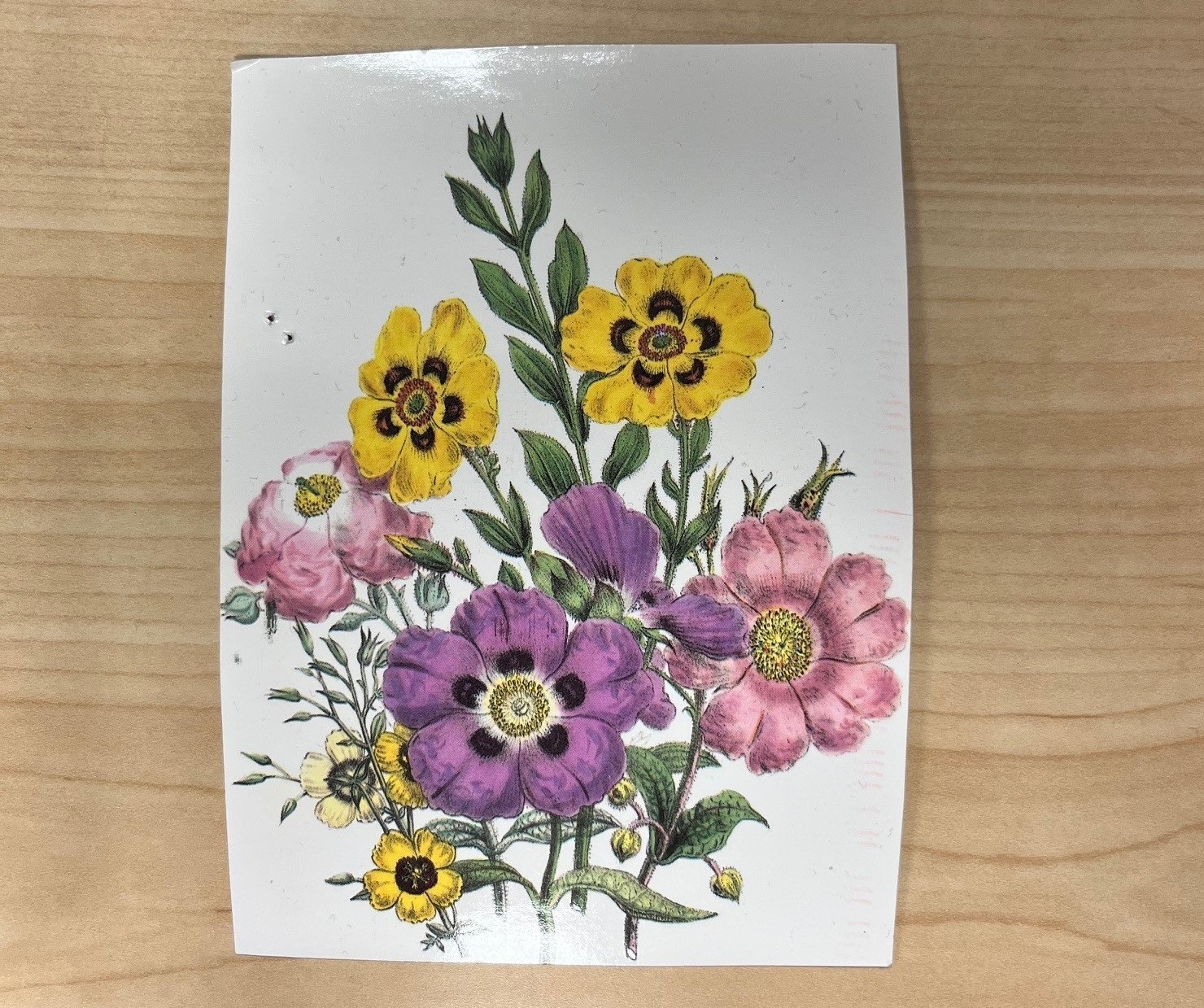
When I look at these, I feel a spark of connection to the community of library users. The shared objects themselves, as well as the stories within them, have always served as a tether across time and individual experience.
“You think your pain and your heartbreak are unprecedented in the history of the world, but then you read. It was books that taught me that the things that tormented me most were the very things that connected me with all the people who were alive, who had ever been alive.”
― James Baldwin